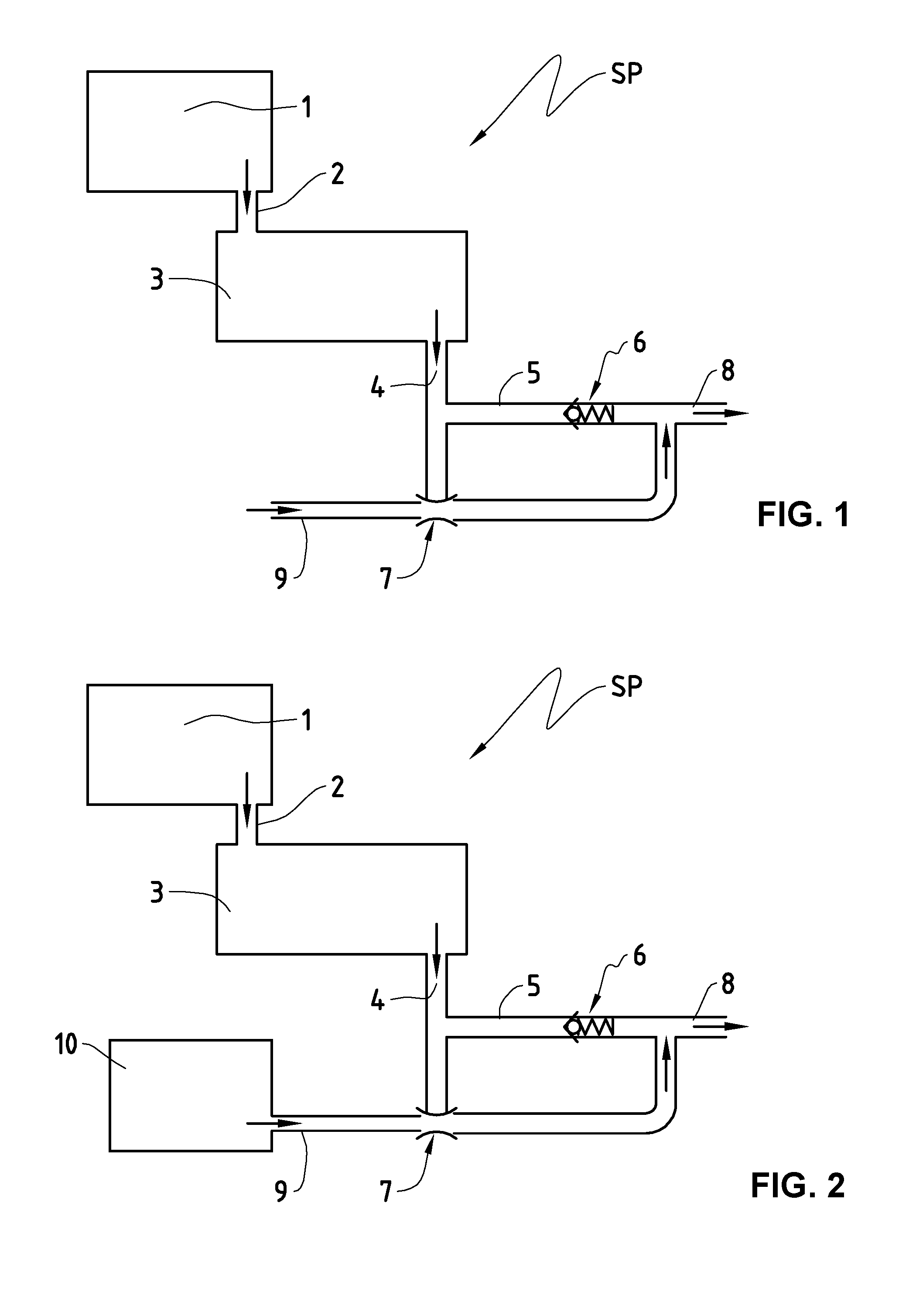Pumping method in a system for pumping and system of vacuum pumps
a vacuum pump and pumping system technology, applied in the direction of machines/engines, liquid fuel engines, positive displacement liquid engines, etc., can solve the problems of system bulkiness, increase in the number of components of the system, complexity and cost, and achieve the effect of lowering the pressure there more quickly
- Summary
- Abstract
- Description
- Claims
- Application Information
AI Technical Summary
Benefits of technology
Problems solved by technology
Method used
Image
Examples
first embodiment
[0029]FIG. 1 represents a pumping system SP suitable for implementing a pumping method according to the present invention.
[0030]This pumping system SP comprises a chamber 1, which is connected to a suction port 2 of a primary lubricated rotary vane vacuum pump 3. The gas outlet port of the primary lubricated rotary vane vacuum pump 3 is connected to a conduit 5. A non-return discharge valve 6 is placed in the conduit 5, which after this non-return valve 6 continues into a gas exit conduit 8. The non-return valve 6, when it is closed, allows the formation of a space 4, contained between the gas outlet port of the primary vacuum pump 3 and itself. The pumping system SP also comprises an ejector 7, connected in parallel to the non-return valve 6. The suction port of the ejector is connected to the space 4 of the conduit 5, and its discharge port is connected to the conduit 8. The feed conduit 9 provides the working fluid for the ejector 7.
[0031]From the start of the primary lubricated ...
PUM
 Login to View More
Login to View More Abstract
Description
Claims
Application Information
 Login to View More
Login to View More - R&D
- Intellectual Property
- Life Sciences
- Materials
- Tech Scout
- Unparalleled Data Quality
- Higher Quality Content
- 60% Fewer Hallucinations
Browse by: Latest US Patents, China's latest patents, Technical Efficacy Thesaurus, Application Domain, Technology Topic, Popular Technical Reports.
© 2025 PatSnap. All rights reserved.Legal|Privacy policy|Modern Slavery Act Transparency Statement|Sitemap|About US| Contact US: help@patsnap.com



